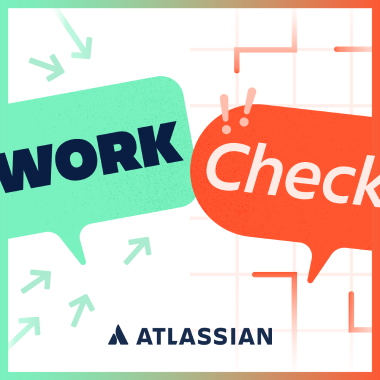If you were asked for examples of “meaningful work,” what comes to mind? Roles like paramedic, teacher, or humanitarian aid worker might be some common answers. But you don’t need to be saving lives for work to be meaningful. In fact, nearly all work can hold meaning for the person doing it.
In Meaningful Work: How to Ignite Passion and Performance in Every Employee, Tamara Myles and Wes Adams explain how meaning has three crucial ingredients: community, or feeling connected to your colleagues and organization; contribution, or understanding the positive impact your work has on others; and challenge, or the feeling of growing personally and professionally through your work.
In the book, Tamara and Wes share concrete strategies leaders can use to build meaning for their people.“Over the last several years, we’ve worked to empirically validate specific leadership practices and organizational structures that increase meaning,” Tamara explains.
“A lot of these things aren’t very complicated. They’re not necessarily easy, but they’re simple, specific, and measurable,” she continues.“The thank you from a colleague, that leader who says they believe in you, the stories from a customer whose life you’ve made easier–all these moments add up to make work meaningful.”
It’s up to leaders to create meaningful work
The power of a meaningful work life is clear – not just in terms of happier people, but business ROI. “Meaning is the upstream strategy that leads to stronger engagement, productivity, and retention,” says Tamara. Meaningful Work cites decades of research that back up this claim.
When an employee finds their work meaningful, there’s an estimated $10,000 annual productivity gain, they are 69% less likely to quit, and 4.5 times more engaged.”
Most leaders want to make their workplaces meaningful, but it’s not always clear how to get there. Most of us are immersed in busy, task-oriented work environments, so it’s tricky for leaders to fit abstract concepts like “create meaning” onto their to-do list.
Of note: Leaders’ actions (or inaction) account for about half of how meaningful people find their work. That’s a big responsibility, but also an enormous opportunity.
The meaningful work recipe: shared values and connection to impact
Two key components of creating meaning are values alignment and understanding impact. Today, we’re sharing strategies and systems for creating both.
- When you and your employer share values, you’ll feel more connected to your colleagues, and more invested in what you’re building together.
- Again, that doesn’t mean you need to be saving lives! If you and your employer both value continuous improvement or strong workplace relationships, that’s value alignment.
- And of course, work is much more fulfilling and meaningful when you can see how you’re making a positive impact.
- That includes impact on customers, but also your teammates, or even your industry!
Ways to build meaning by communicating shared values and positive impact
Most of these strategies come down to transparency and communication. Tamara and Wes recommend storytelling as a tool to make all those communications more powerful.
“Part of your job as a leader is to connect the dots for people; to tell the story of how the decisions you’re making reflect your values, and how you’re impacting customers and employees,” says Wes.
Center values during recruitment and onboarding
Recruiting and onboarding are a crucial opportunity to set hires up for a meaningful career experience. “These early moments have a huge impact on how meaningful we find work for the entire time we’re with a company,” says Tamara.
Ask about candidates’ values during the recruiting process, and be ready for a two-way conversation about how they align with your own. When sharing about your company’s values, don’t just speak abstractly – give specific examples of what they look like in action.
“It’s great to say we value transparency,” says Tamara. “But it’s better to have the CEO come in during onboarding, and talk about a time things weren’t going well, she made a difficult decision, and she decided to publicly share her process with the entire company.”
Reflect organizational values in metrics and KPIs
“If an organization is trying to be values-driven, it’s important to reward behaviors that reinforce those values,” Tamara shares. While this may seem obvious, it’s common for success metrics to conflict with company values in surprising ways.
For example, if recruiters are rewarded for how many roles they fill, they may end up placing people in positions that won’t truly bring out their best work. In Meaningful Work, Tamara and Wes explain how at accounting firm KPMG, these teams are rewarded not just for quantity, but quality of each placement, and how happy the new hire is in their role.
At Schneider Electric, values alignment is part of the review and bonus structure. Employees and managers discuss values in their yearly performance reviews, and employees who live their values will be recognized and rewarded.
Bring customer impact stories into regular communications
Every product or service serves other people–but it’s not always easy for employees to picture the humans their work is affecting. That’s why, to create meaning, leaders should weave customer voices and stories into employee communications.
- Record video of customers talking about how your organization has made life easier
- Invite customers to speak at town hall meetings or company offsites
- Include customer story quotes or video clips in employee newsletters
- Build customer impact into performance reviews, and reward employees for creating it
But it’s not enough to share case study-style success metrics. The goal is to humanize customers and share impact on their personal and professional lives. Instead of saying that a customer saved six hours a week, say they’re less distracted and have more time for the deep, focused work they love every day.
Structure thanks and positive feedback with “if it wasn’t for you”
Sharing the impact people have on colleagues – not just end users – is crucial for creating a meaningful work experience. “Many leaders completely under-utilize positive feedback,” says Tamara. “This is a tool that is free, is not time-consuming, and makes a huge difference.”
Meaningful Work cites a study from Gallup and Workhuman, which found that less than 40% of people feel recognized and appreciated enough for what they do in the workplace. Yet hearing “thank you” just once a week from a manager has been shown to cut disengagement in half!
Tamara and Wes recommend a tactic from fellow researcher Zach Mercurio, using “if it wasn’t for you” messaging to keep your thank-yous personal, meaningful, and focused on impact.
- “Thank you so much for helping me prepare for the interview. If it wasn’t for you, I would’ve forgotten to ask whether the candidate wanted to grow into managerial roles!”
- “Thank you for agreeing to let me pass the story off to you on Friday. I would have missed my friend’s dinner party if you didn’t come through for me.”
- “Thank you for pointing out that the development cycle was unrealistic. You’ve saved everyone on the team a lot of stress and burnout.”
Make sharing appreciation a regular part of how you work. For example, you could set a reminder to send five “if it wasn’t for you” notes to your team every Friday.
Use SPOTlighting to show how values inform your decision-making
Wes and Tamara recommend SPOTlighting–Situation, Priorities, Outcomes, Talkback–as a model for communicating decisions. This is a storytelling technique that can help leaders explain how choices they’ve made ladder up to values and organizational goals.
- Situation: What’s the context? What factors did you consider in your decision?
- Priorities: What values were you focused on when making this decision? How did you weigh values against each other if they were at odds?
- Outcomes: How will the decision affect the company and team? How does that connect to larger organizational goals you’ll have a year or a month from now?
- Talkback: Create space for people to ask questions and share disagreements, so that you can bring people into alignment around the choice that was made.
Pro tip
Tamara and Wes recommend Loom as an asynchronous storytelling tool. “In remote workplaces, people won’t know your reasoning unless you tell them,” says Wes. “Video can be much more impactful than text, because voice, tone, and body language are huge for connecting and telling a story.”
Create dedicated online spaces for meaning
In distributed organizations, it takes even more intentionality to create meaningful work experiences. “One of the biggest mistakes leaders make is assuming people know what’s going on–especially when they’re not in the same room,” explains Wes.
Tamara and Wes recommend finding dedicated virtual spaces for showing appreciation and sharing value and impact stories. In practice, this could look like:
- A shared values board, where employees can add stories about how they’ve lived company values or seen them come to life at work
- An extra column on your Trello board for sharing a project’s impact after its completed
- Tagging tasks in Jira with the company goals and values they support
- A Slack channel for sharing thanks and “if it wasn’t for you” statements
As you choose how to highlight values, impact, and appreciation online, make sure you’re being intentional, and not creating extra work. “If there are too many tools to contend with, or you’re saying thanks but there’s no deeper impact shared, it just becomes noise,” says Wes. “It takes a lot of time, connection, and intentionality to make sure people understand what’s driving the organization, and the impact their work is having.”
Meaningful Work is available now. Connect with Wes Adams and Tamara Myles on LinkedIn, and learn more about their speaking, consulting, and services on the Meaningful Work website.





 )
) 







































